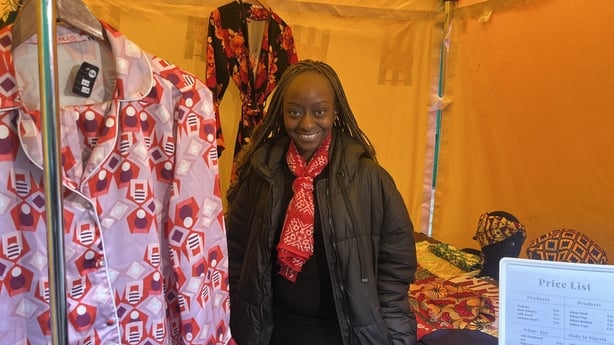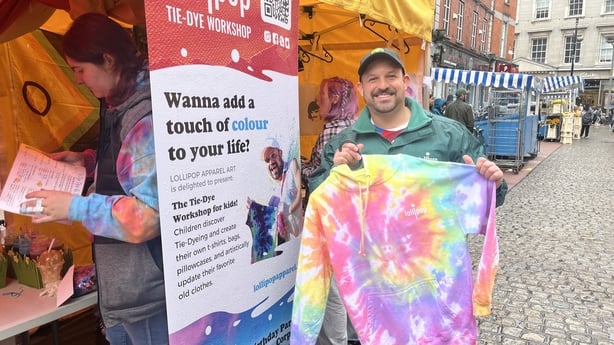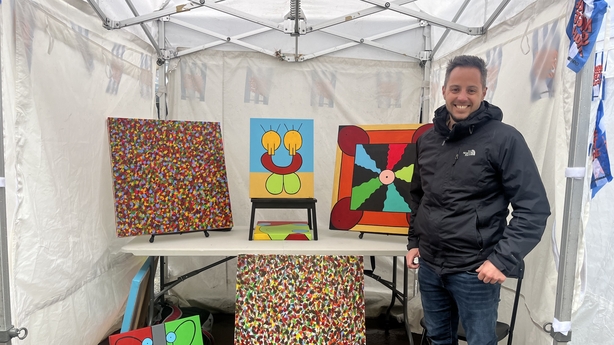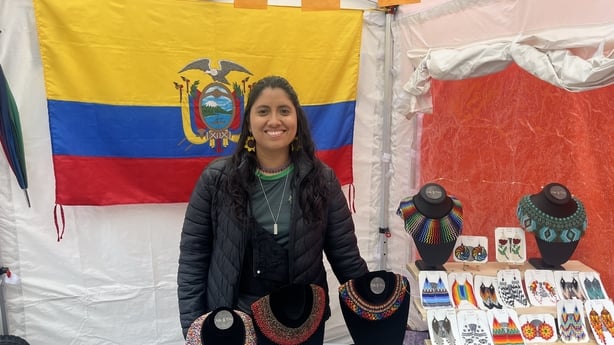A new weekly market is being held on Dublin's Moore St to try and reinvigorate the capital's most traditional trading street.
Dublin City Council say they hope that the introduction of artisan craft stalls, live music performances, cultural events and a nighttime food festival will help improve business for the traditional Moore St traders.
Moore St has been a retail centre since the 18th century and has survived revolutions, recessions and the rise of retail giants.
But the street which is famous for the cries of traders advertising the prices of their produce, mainly fruit, vegetables, flowers and fish, has experienced a steady decline in recent times.
In the 1980s, the opening of the Ilac Centre impacted business as did the growth of supermarket chains across Ireland.
The increase in immigration in the 1990s brought new customers to Moore St and threw the iconic shopping street a lifeline.

But the pandemic dealt a serious blow to the district and when the city gradually reopened following lengthy Covid restrictions in the retail sector, many of Moore St's stalls remained shuttered.
Now, Dublin City Council has started a weekly market to try and inject new life into the historic area.
Florance Olufemi-Ojo from Jobstown, Dublin is selling clothing inspired by her Nigerian heritage under the brand name 'M.I.O Prints'.
"It's great. Every day is different. There's never a dull moment on the street. It's one of Ireland's main shopping streets. It is always always good vibes."
She also says that old and new traders are mixing well and exchanging their experience and skills.
While she has shared her social media, marketing and TikTok skills with the street's traditional sellers, they have also shared some of their tricks of the trade.
She says: "Obviously they have been doing this for so long and they're way more experienced than us.
"And it's just nice to just even be able to ask them questions on you know, how do you look after yourself, what to expect and just even learning their skills and how to manage people and how they interact with the community. It's great.
"And we're teaching them stuff. Sometimes I'll have my phone, I'll take photos for Instagram and they're like 'What's she doing?' you know, creating TikTok and stuff. So it's been great to kind of just get to integrate and collaborate."

Irish-Venezuelan brand Lollipop Apparel owned by LGBTQI activist Leonardo Guerrero is selling handcrafted tie-dyed hoodies and other garments.
He says: "The engagement is amazing. People are really connecting with the market and with the products and helping local artists to put out their brands and their work. It's very cool. It's a good fun here."

Artist Paul Sanz from Toronto, Canada said he was enjoying his pitch on the street.
"I'm just having a little bit of fun and showing what I can do. It's nice."
Andrea Cristina Arroyave from Ecuador who lives just off Moore St sells jewellery she imports from her homeland which is hand-made by local tribes.
She says: "I have good customers. The Irish people is loving so much the products and also a lot of immigrants as well and I find this a really nice area, the sense of community I have with the other traders here as well its nice to be here."

The market is supported by the council's Office of City Recovery which says it will bring vitality to the street and enhance the experience of existing traders.
Public Domain Officer with Dublin City Council Catherine Brophy Walsh says footfall has already begun to increase.
She says: "Build it as they come as they say and there's more people on this street coming to this market on a weekly basis.
"For the month of April, it's two days a week, it will be increased to three days a week in May. And then for the rest of the summer months, June, July and August it'll be a four-day week."
The Moore Street Traders Association say they welcome the new market but say the council need to do more to improve the area.
Margaret Hanway is a third-generation Moore St trader who has worked on the street for 50 years says the boost in trade is welcome but she fears it will not be enough to stop the street's decline.

She says: "I'm pleasantly surprised because a few weeks ago when I was down, I didn't see any improvement. But looking at the street now, there's a lot of people on it. I think it's too little too late.
"In all honesty, this should have happened years ago. At the moment their 16 traders. There was 120 at one time."
The Moore Street Preservation Trust, which has long campaigned to make some of the buildings on the street declared a historical monument because of their role in the 1916 Rising has welcomed the development.
The trust’s secretary, Mícheál Mac Donncha, who is also a Dublin City Councillor, says the main problem with the area is the effective freezing of the street due to stalled redevelopment plans for the area.
He said that any progress in the area is welcome.
Among those occupying the new pitches on the street is an Indian street food kitchen Delhi2Dublin, run by husband-and-wife team Aanchal & Adarsh who sell dishes made from their mothers’ recipes.
Maryna Shulha, a music student who fled the war in Ukraine, will also have a regular musical performance slot on the street.
Leila Jane, a Dublin-based recording artist who recently competed in Ireland's Eurosong competition, will also be performing on the street.
There will also be a new night-time street Food Festival called "Street Feast" during July.
The new market format is just getting up and running but its organisers are appealing to artists and traders to become a part of the new project which they hope will grown to be a creative and multi-cultural fixture in the north inner city.
Moore Street Market Curator Christina Quill says: "We recognise the huge importance of Moore Street as a traditional market destination, and we also want Moore Street to become a new multi-cultural space in Dublin.
"We’re looking for artists with ideas to create new projects inspired by Moore Street art, print, music, performance, installation. We are also looking for traders of all kinds to trade on a regular basis."
She adds: "It's a great opportunity for new start-ups to try a business in a low-risk format in a maximum footfall area.’’






